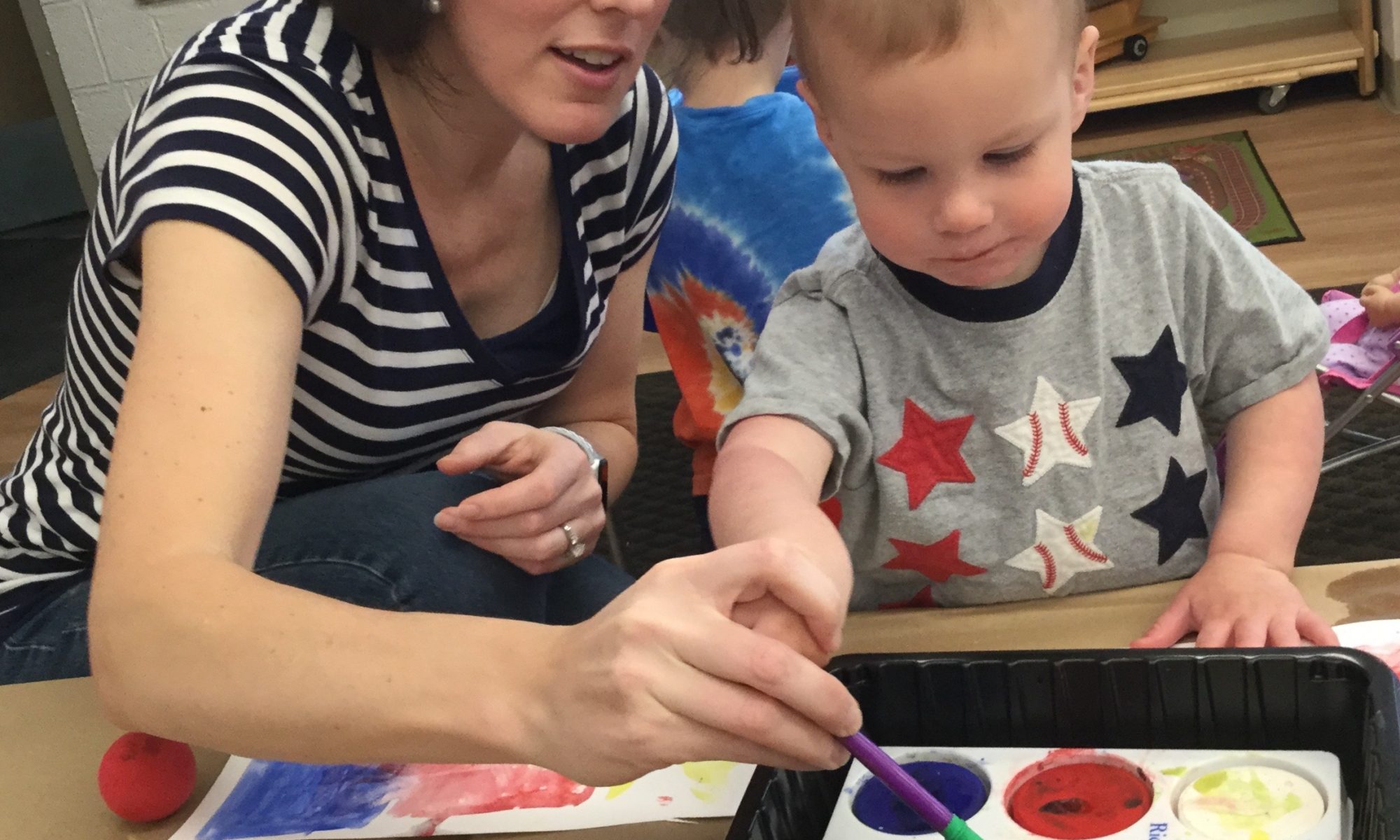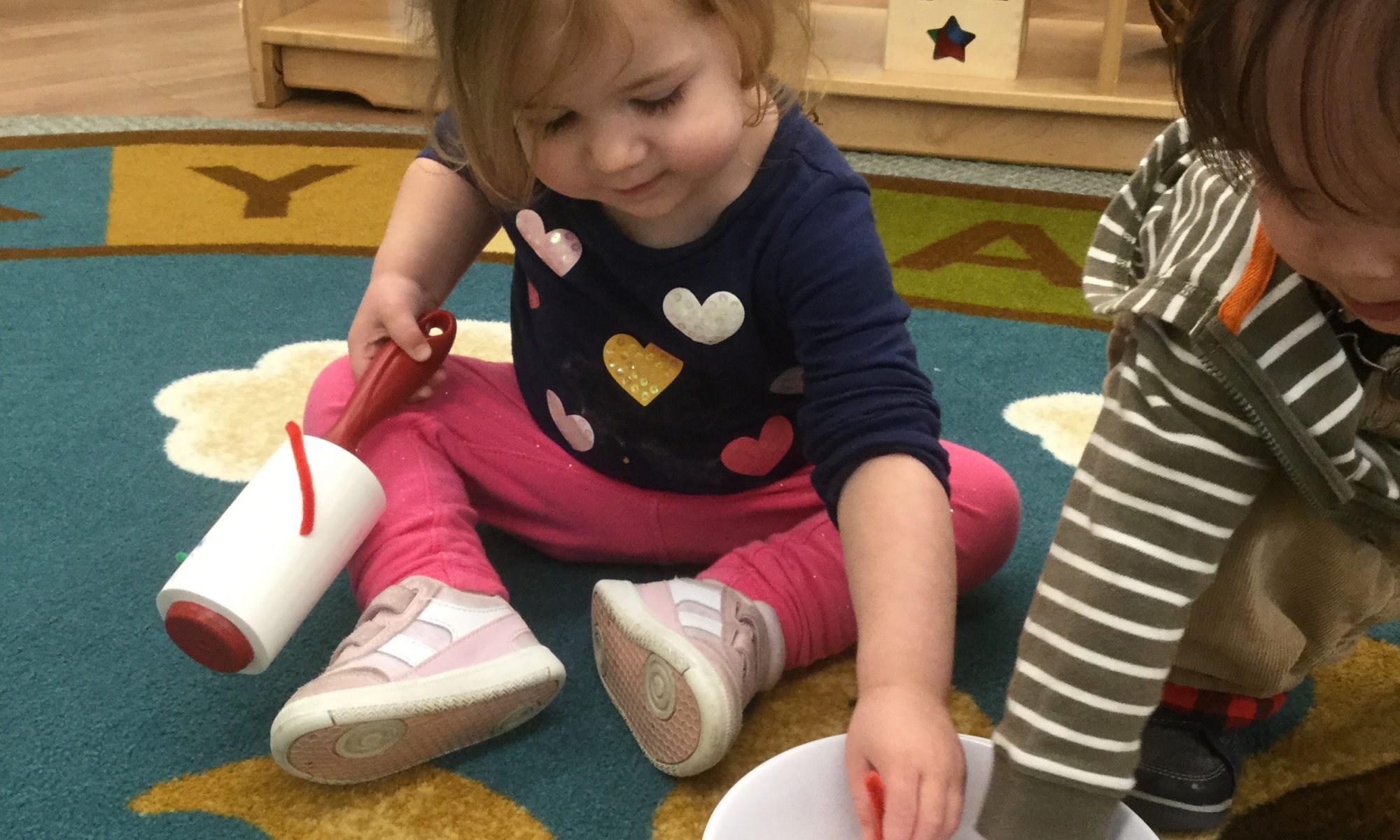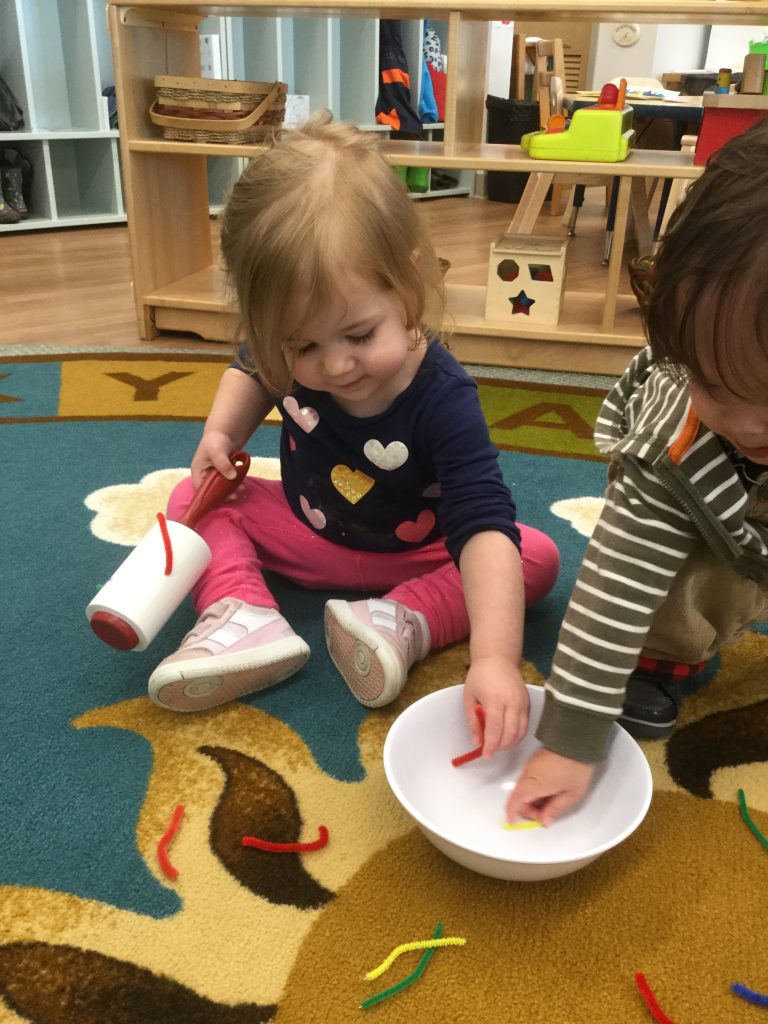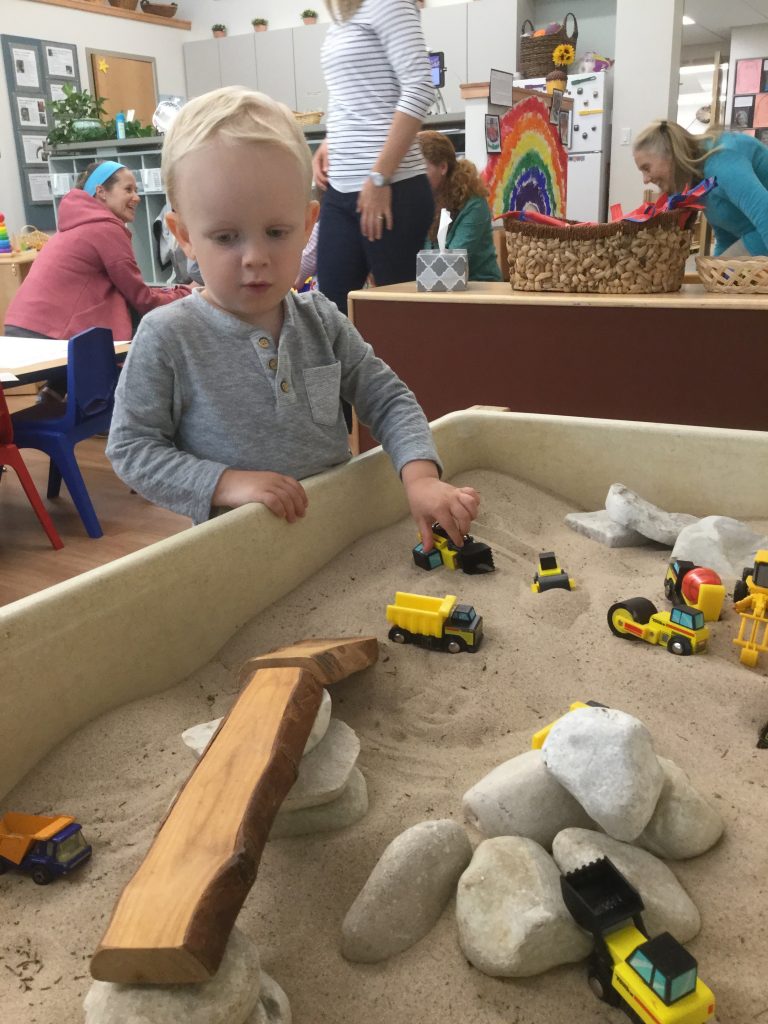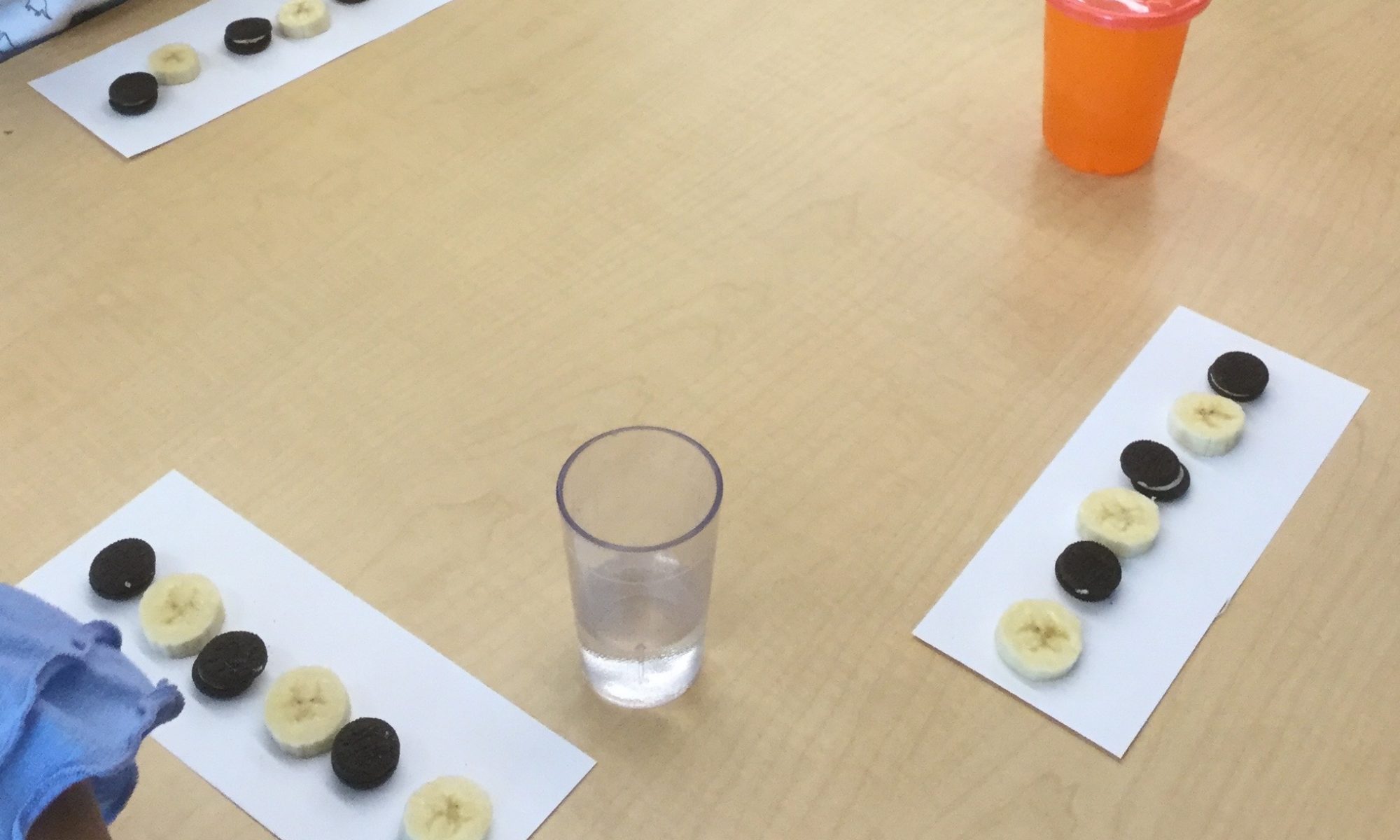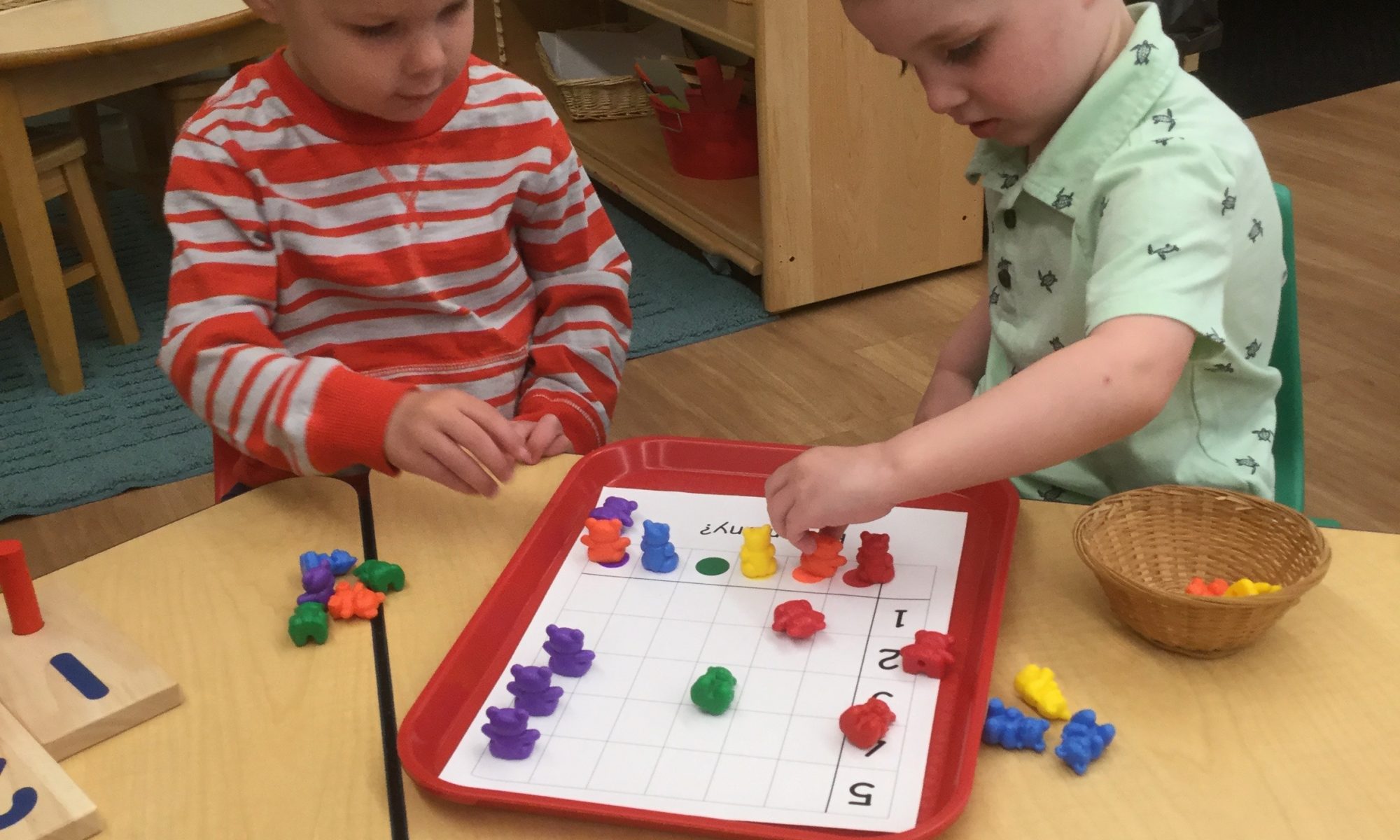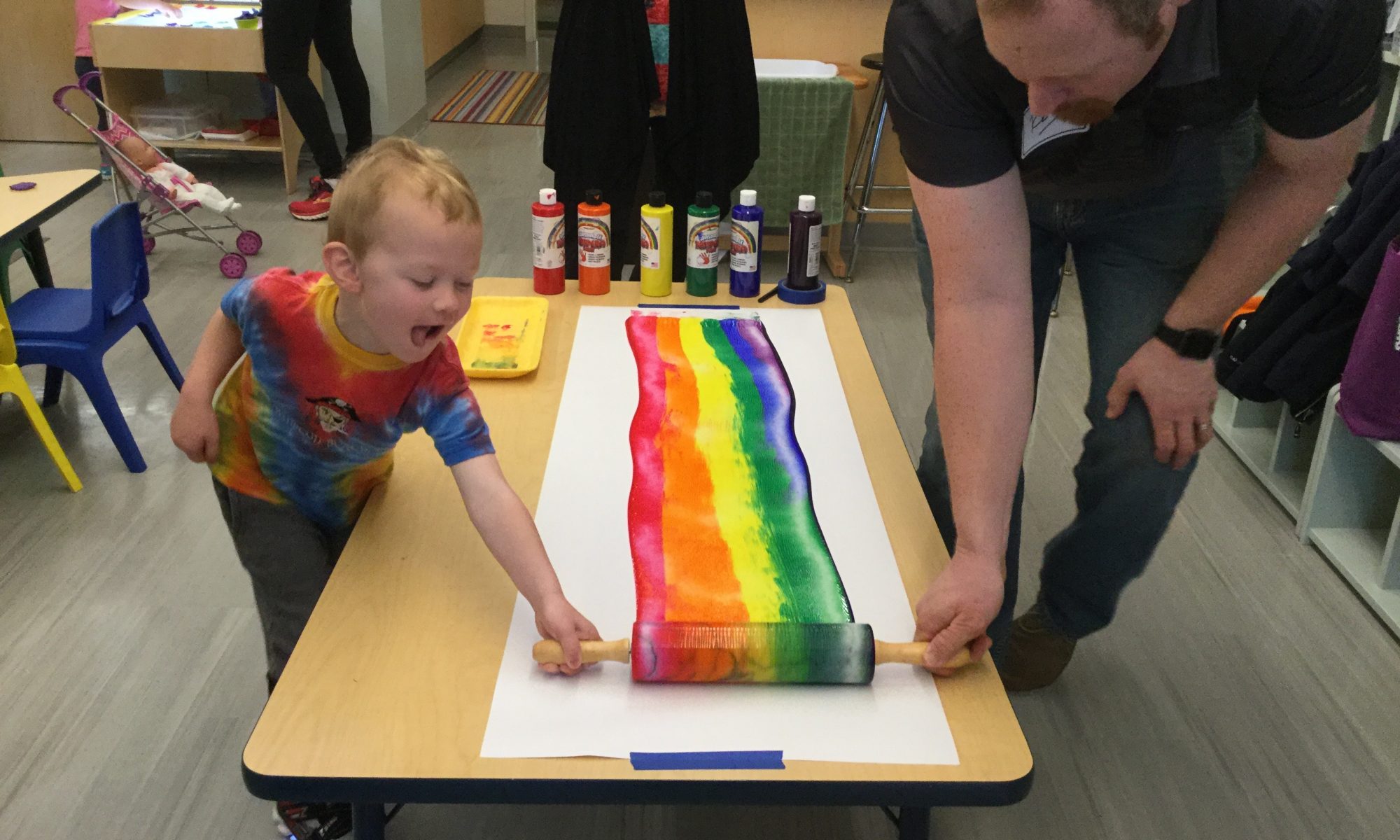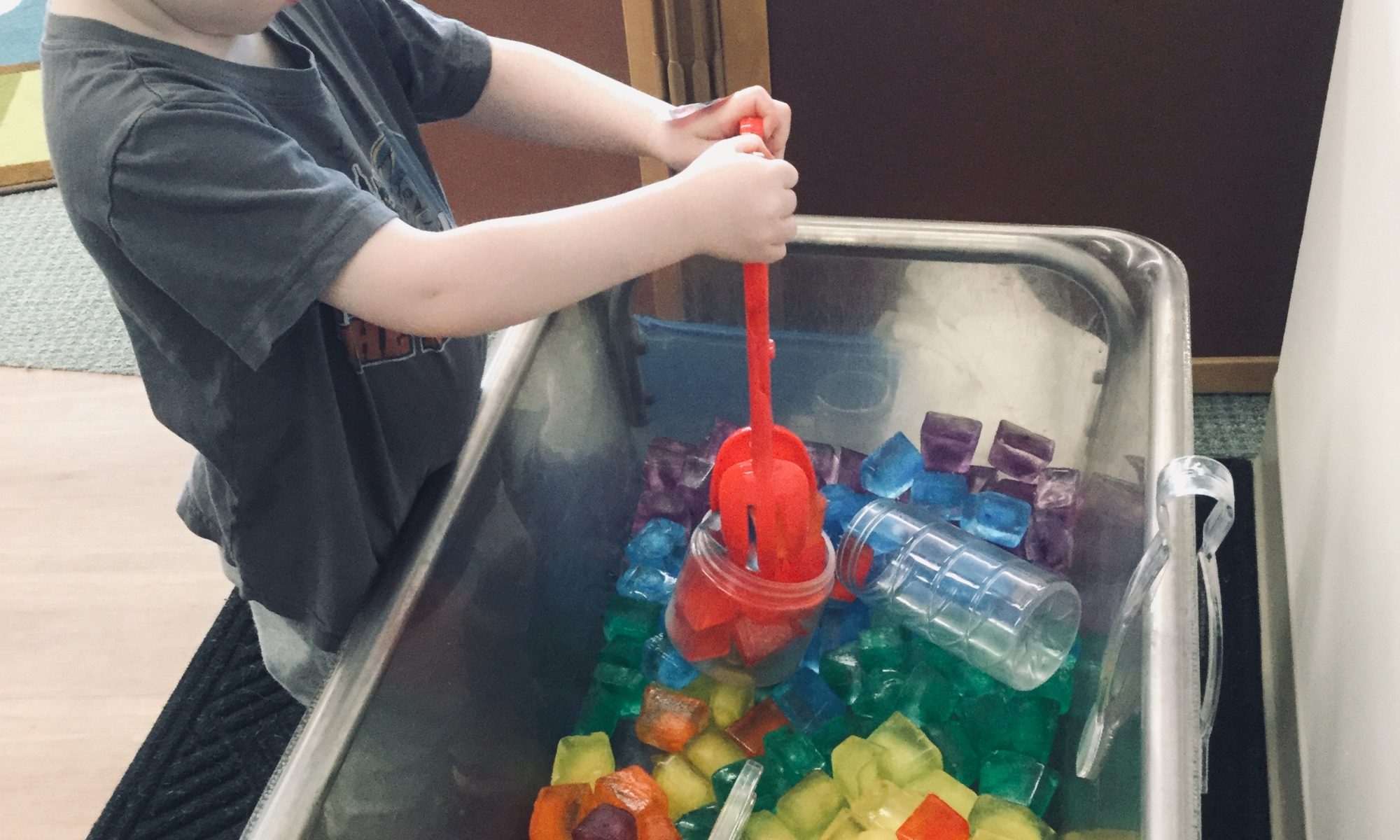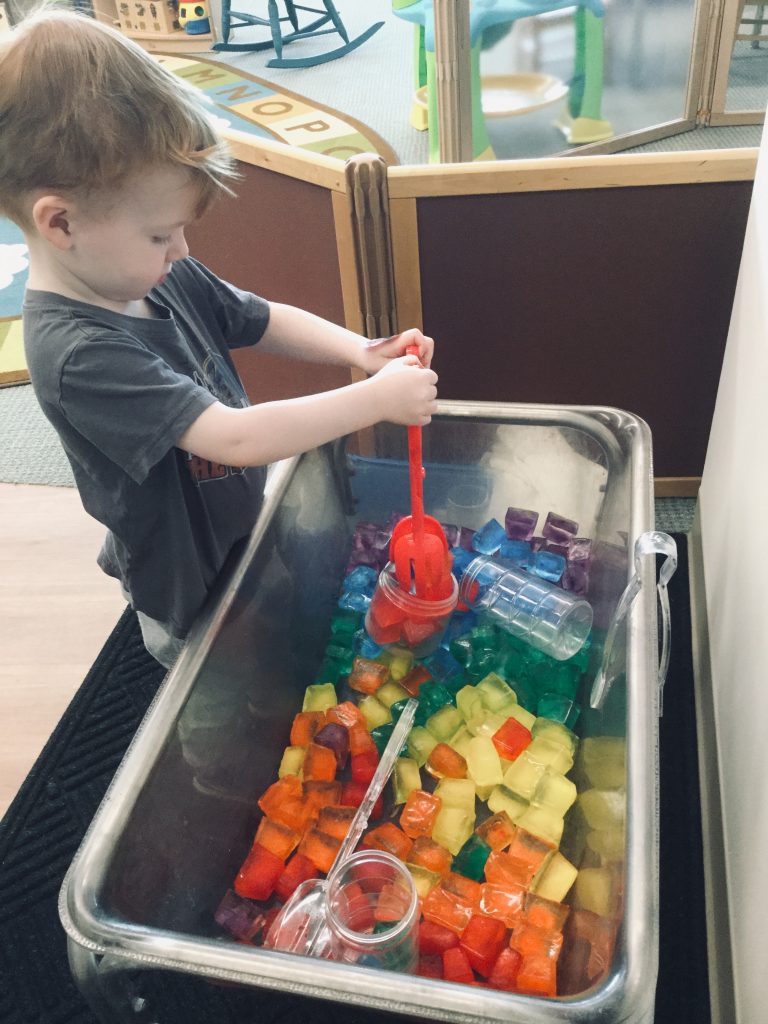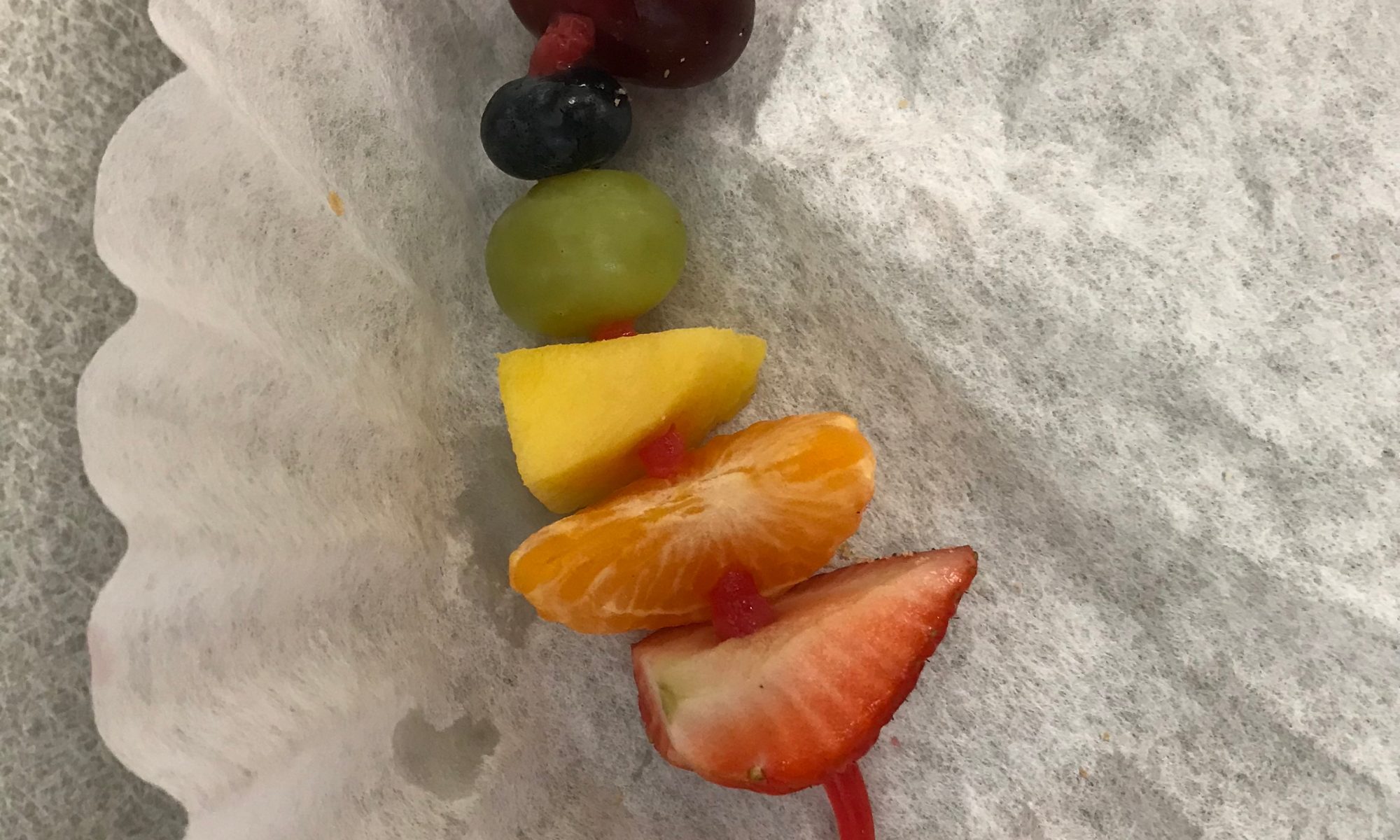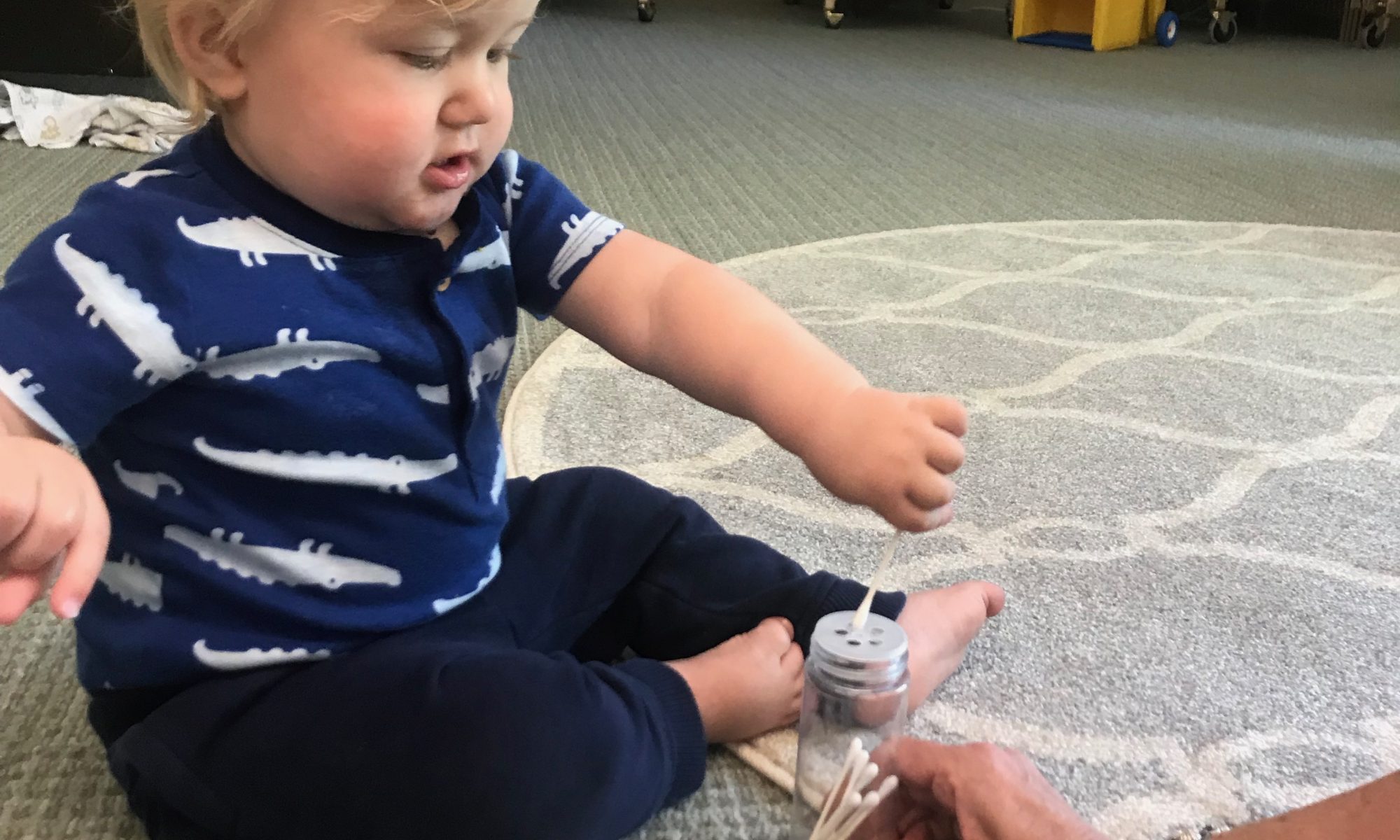Materials:
Strip of white paper, approx. 6” x 18”
White crayon
Water color paint set with a paintbrush
Water in a cup
Tape
Directions: This is an activity that will require mom or dad to do part and your little one to do part. First, tape the paper to your work surface. Next, mom or dad should draw a simple pattern on the paper with the white crayon. For example, a circle, a triangle, a circle, a triangle, etc. Press firmly with the crayon when you’re making the pattern. (If you don’t have a white crayon, you can use the end of a small candle, e.g., a birthday candle).
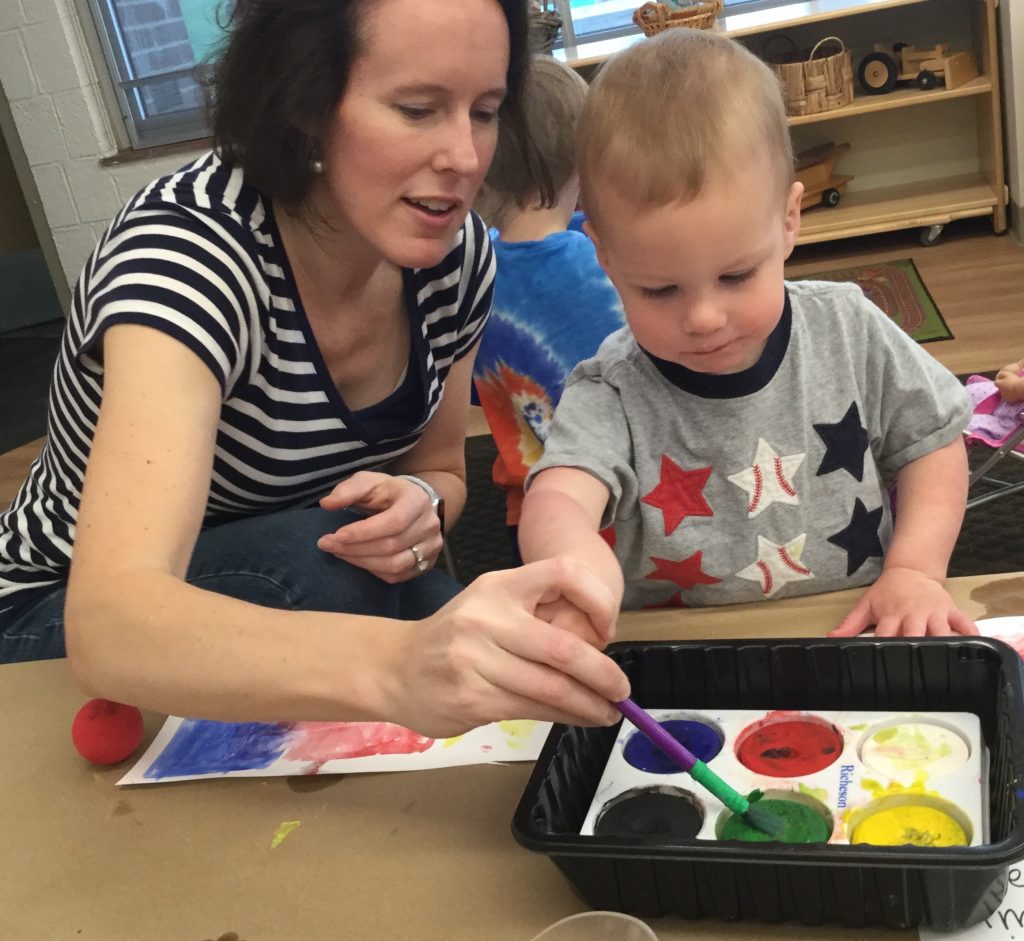
Put a little water in the cup and demonstrate to your child how to dip the brush in the cup of water and then in the water color paint cake. Once he’s made a little liquid watercolor, let him paint all over the paper. The color will cover the paper except where the crayon marks were made! (And if you don’t have a paint set handy, just mix a little food coloring into the water.)

